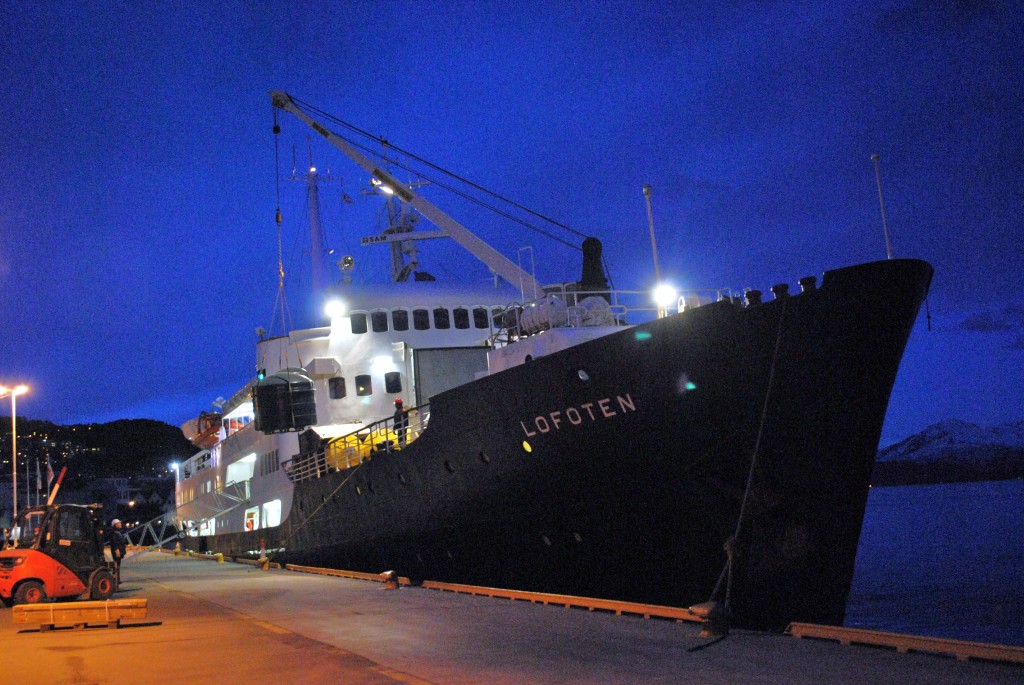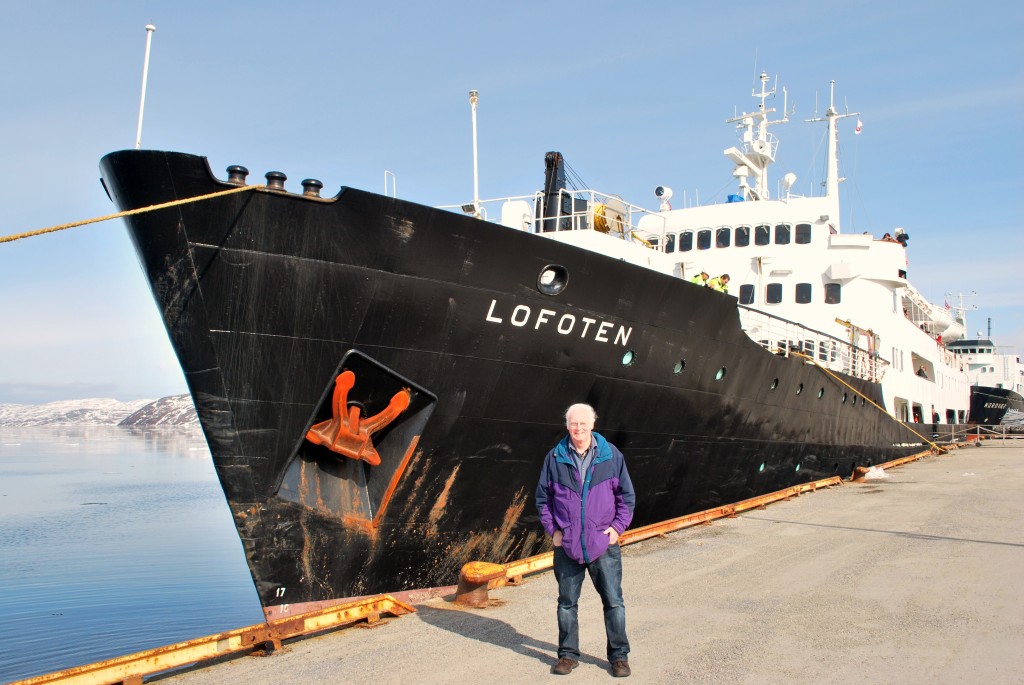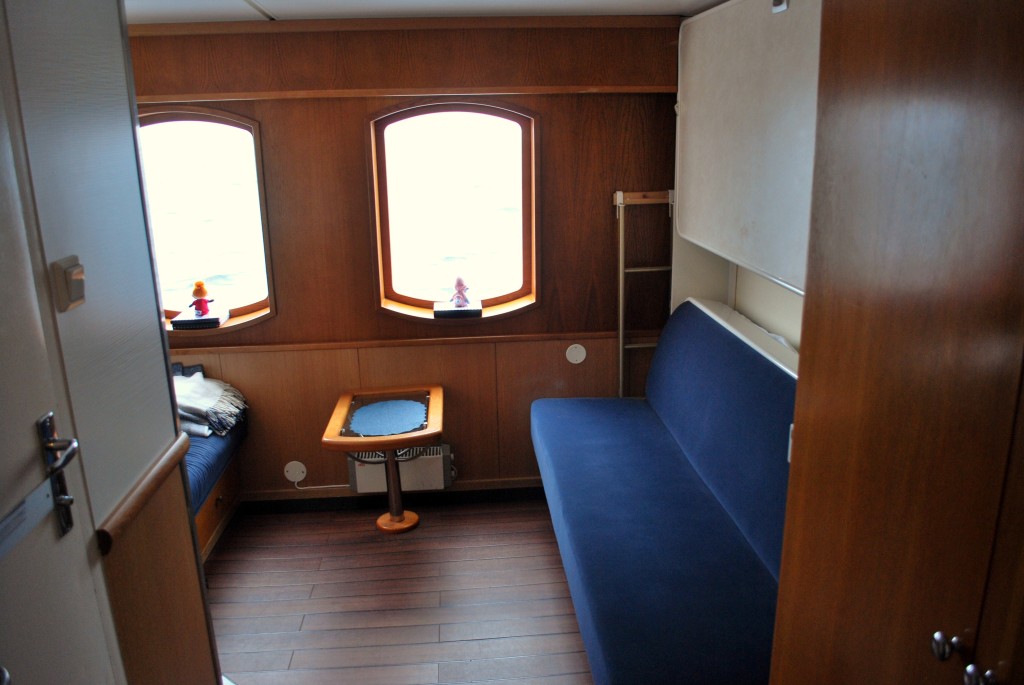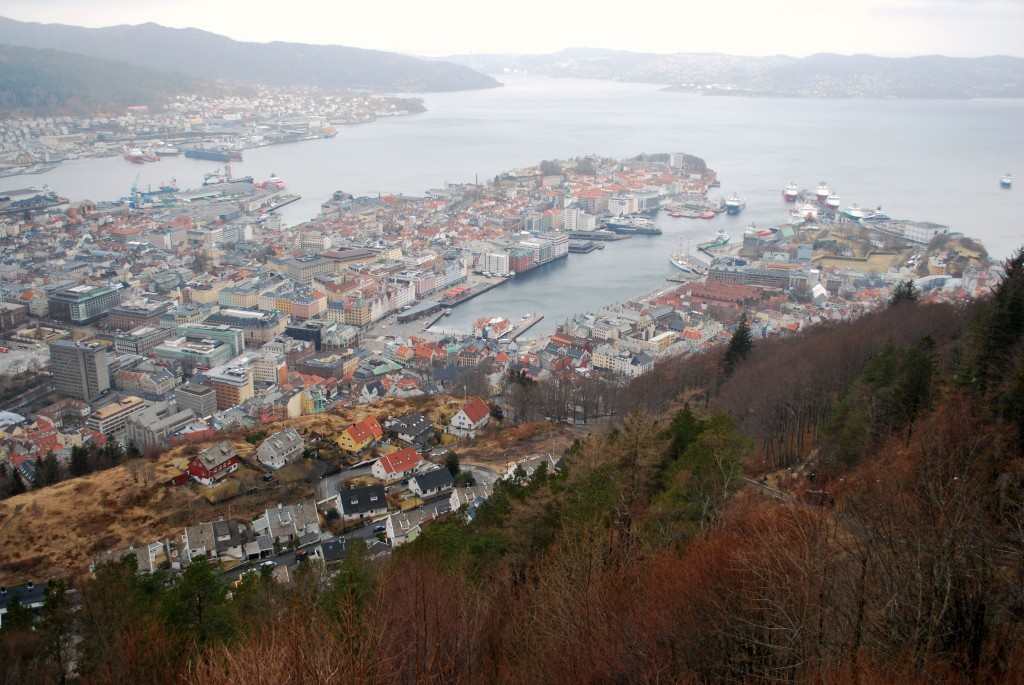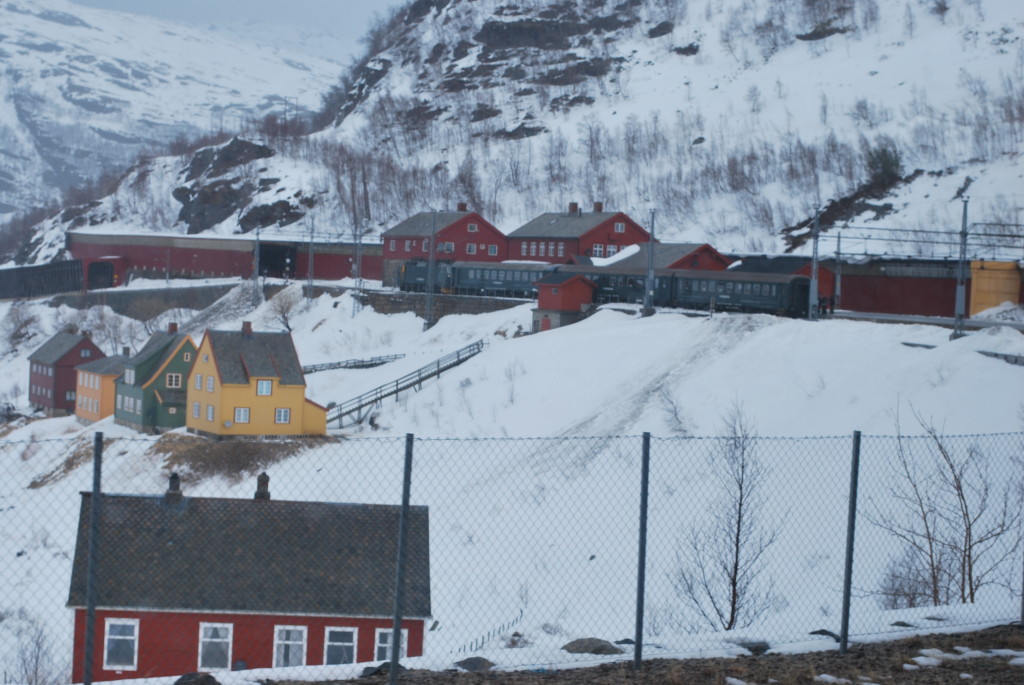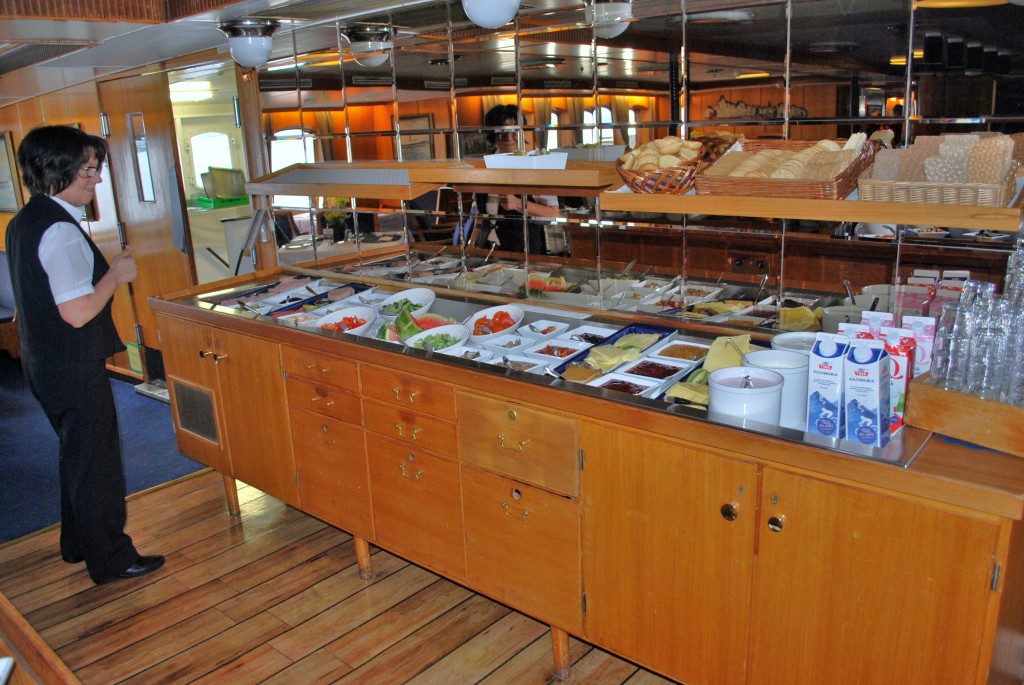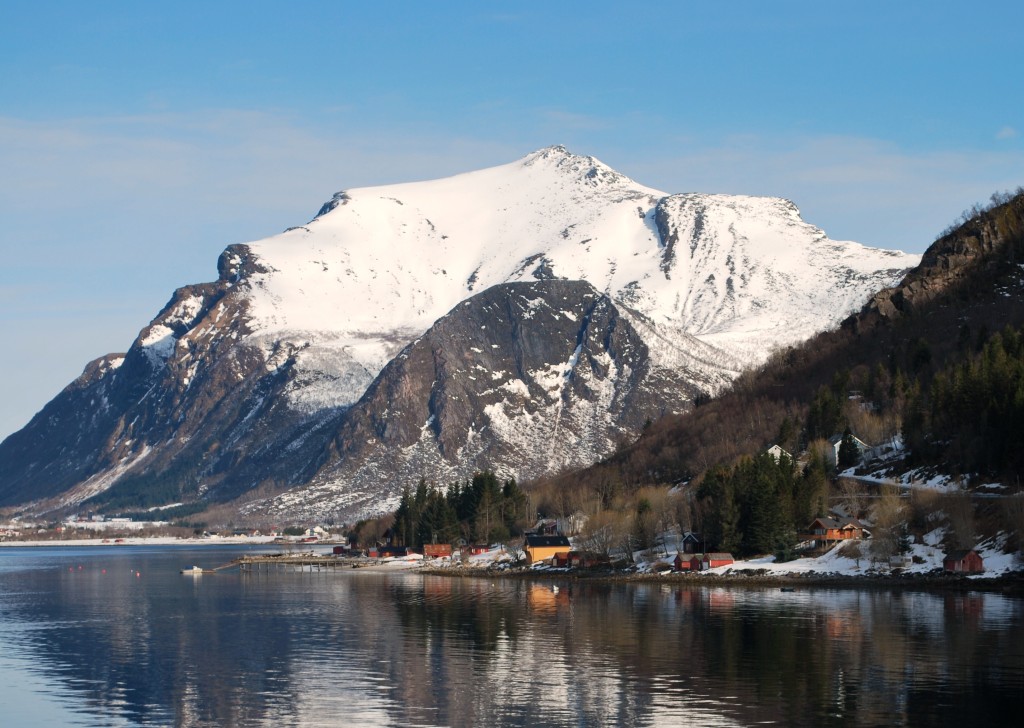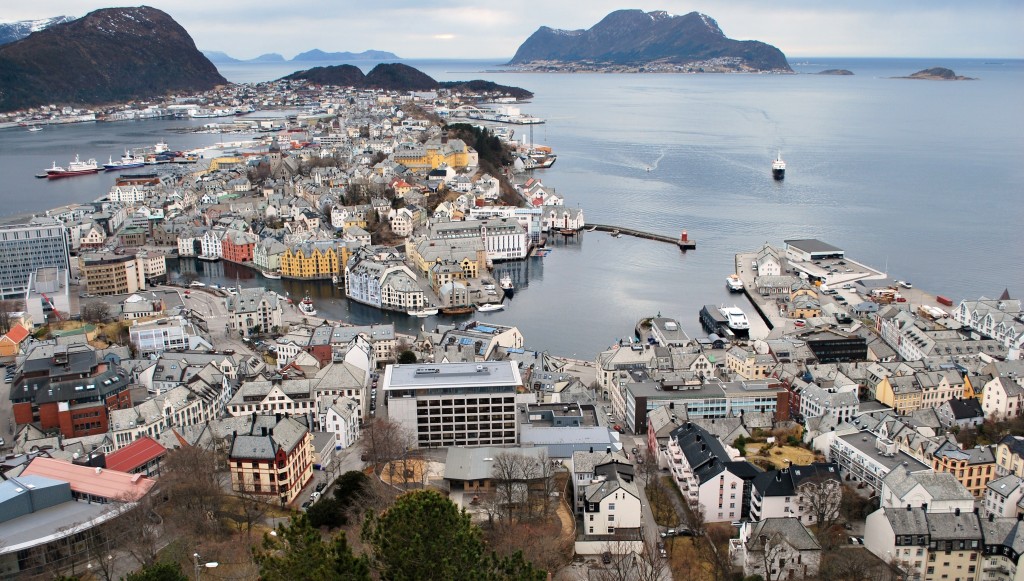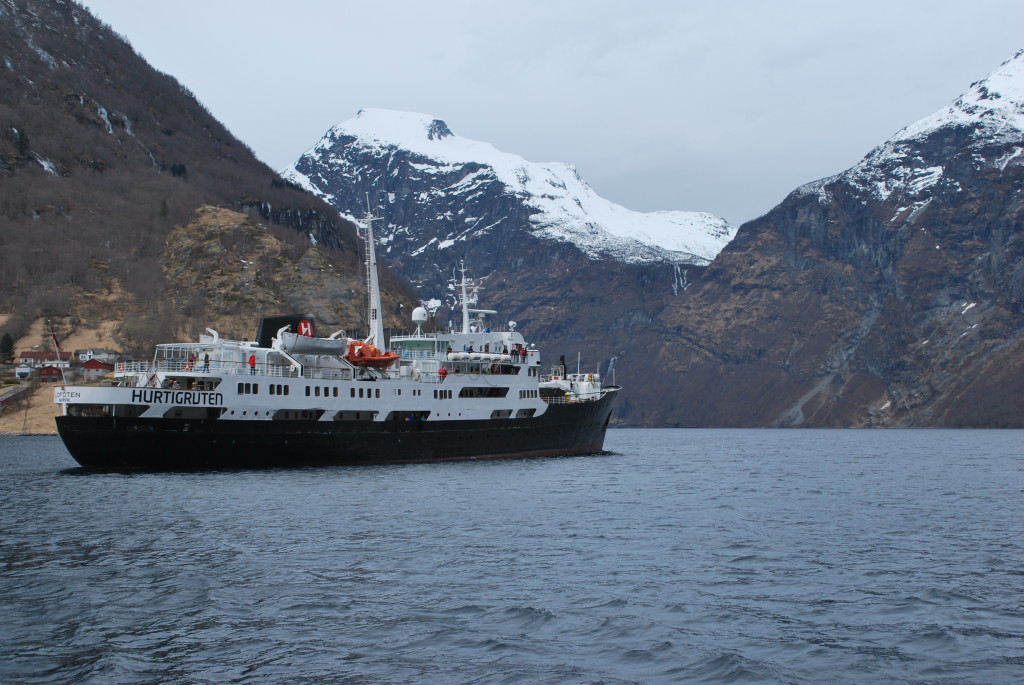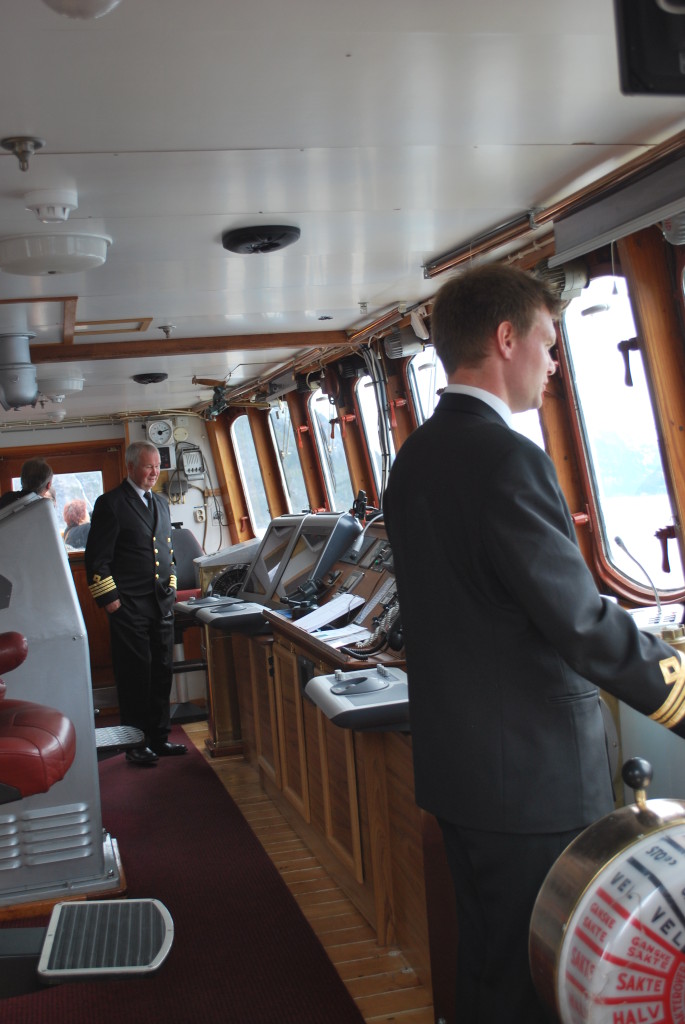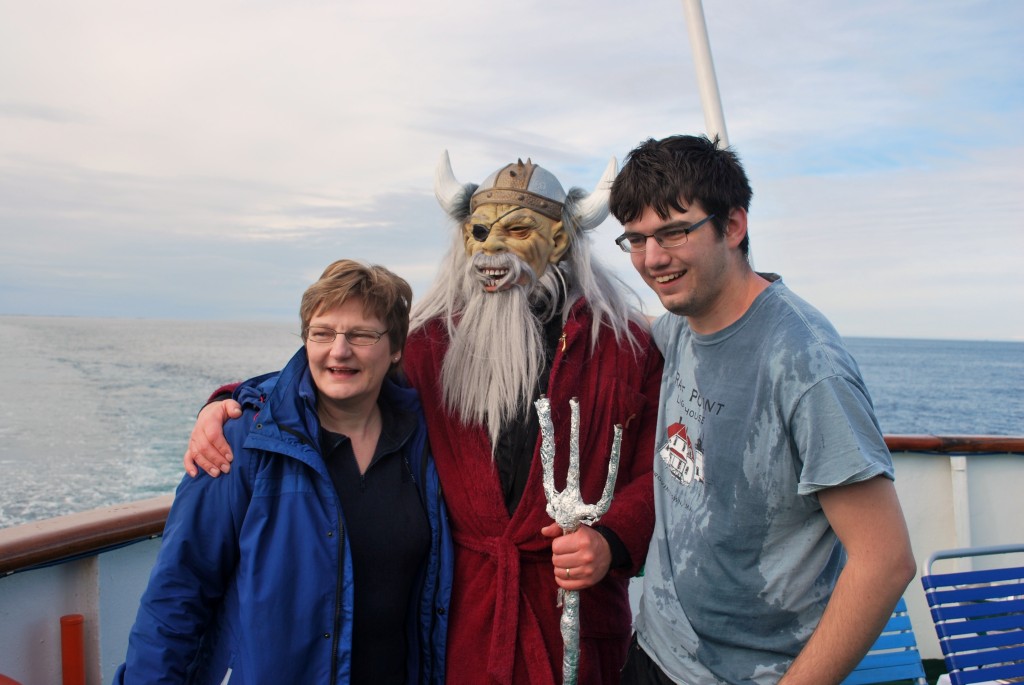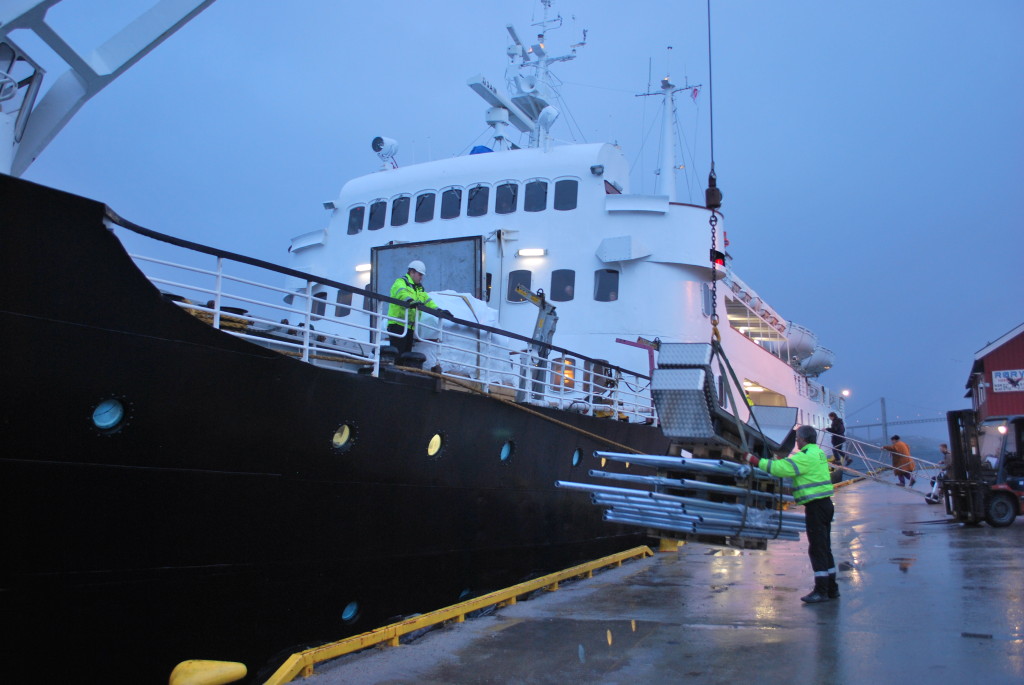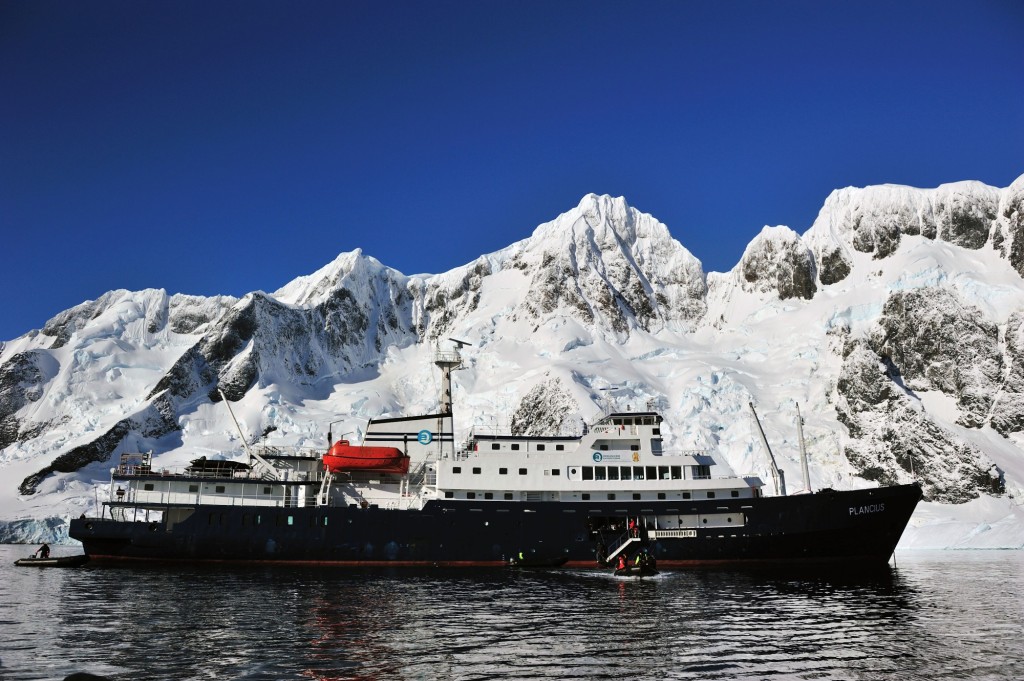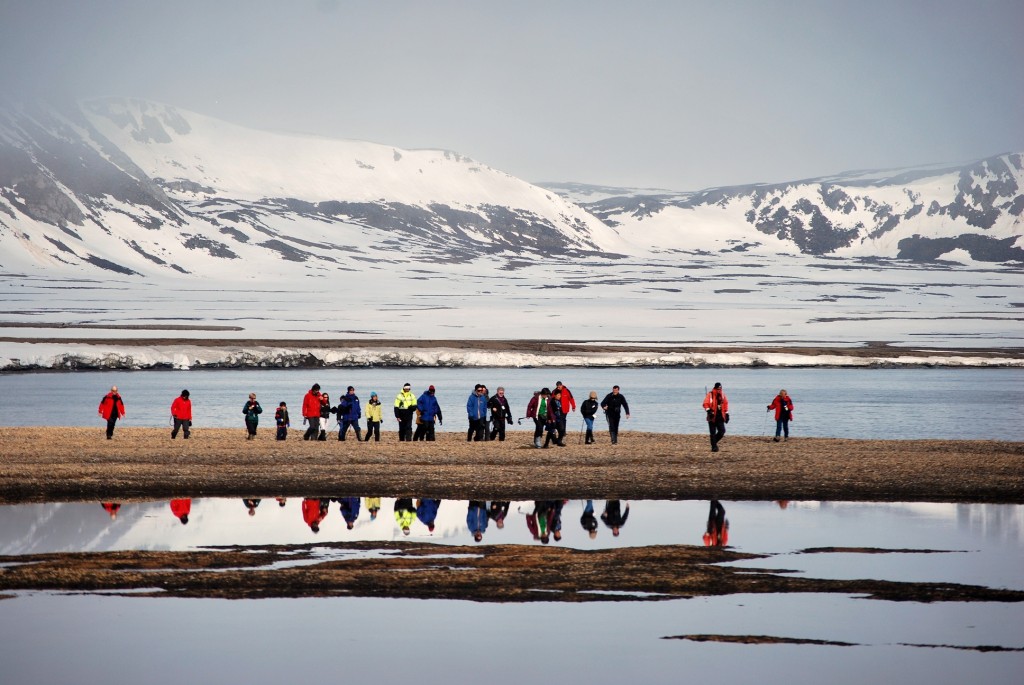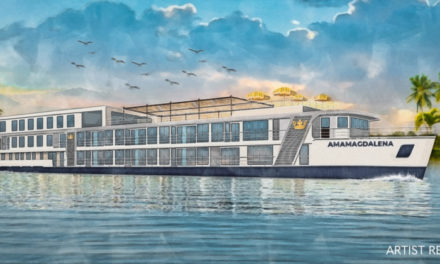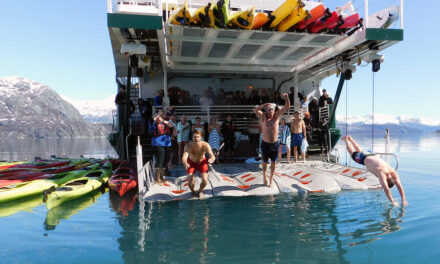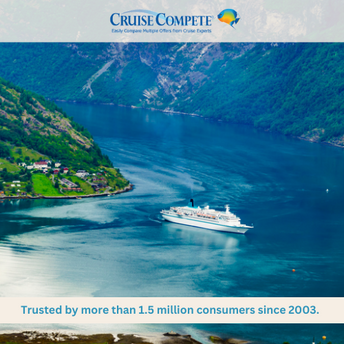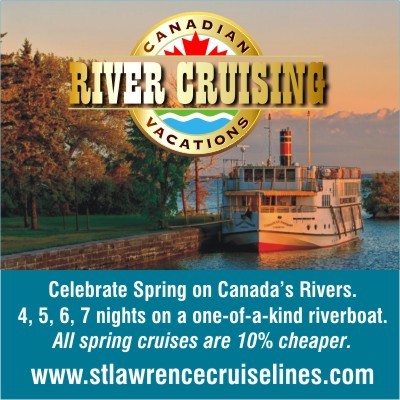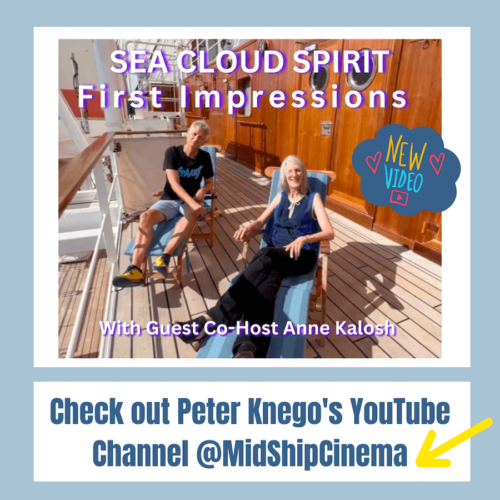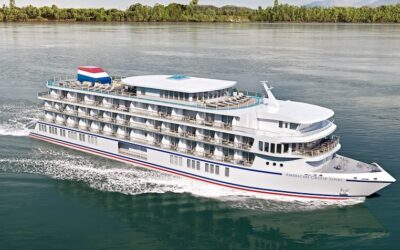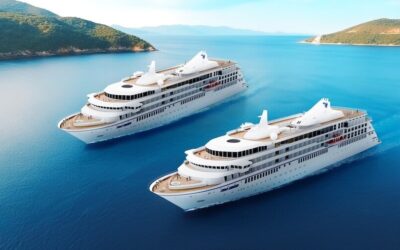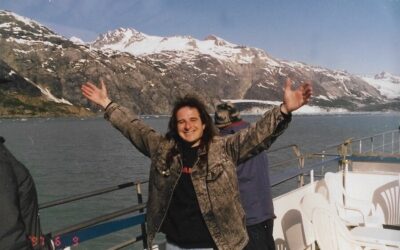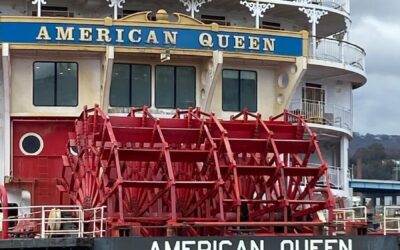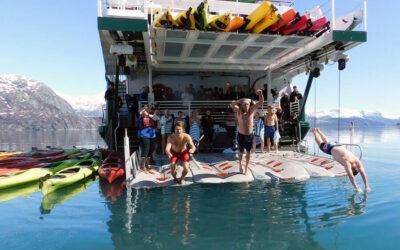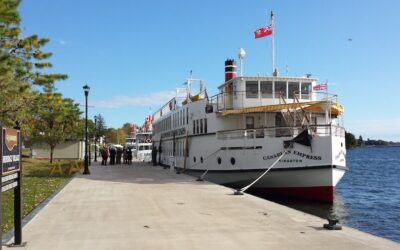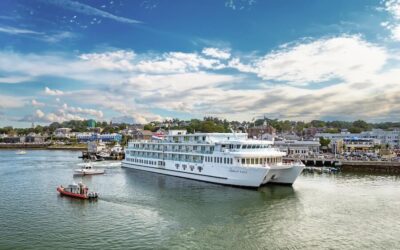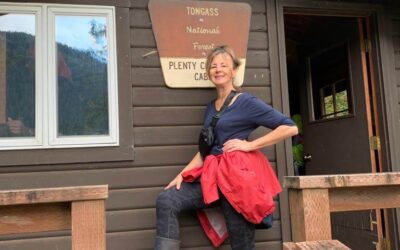MS Lofoten
By Ted Scull.
The enchantingly scenic Norwegian coastal voyage, officially known as the Hurtigruten (translating to Fast Route in Norwegian), ranks as my all-time favorite ship trip. The venerable passenger and cargo service dating back to 1893 sends out a ship every night from Bergen on a 2,500-mile trek to well beyond the Arctic Circle and back, making 33 port calls in each direction over a 12-day cycle.
In the earliest days, the ships have evolved from tiny coastal steamers measuring just over 1,000 tons to today’s much larger vessels in the 11,000- to 16,000-ton range.
The simple accommodations of the recent past have given way to relative luxury on 11 of the fleet’s dozen ships, offering comfortable outside cabins with private facilities for some 451 to 640 passengers, as well as multiple lounges and meeting spaces for conferences.
The 12th unit, the diminutive 2,621-ton, 153-berth MS Lofoten is altogether different — a present-day throwback to a much earlier era and consequently much sought after by classic ship aficionados.
On the other hand, she should be avoided by those who could not imagine sailing in a tiny cabin with twin beds or upper and lower berths or, perish the thought, possibly having to scurry down the corridor for a shower if the much sought-after cabins with full facilities are booked up. Living history exacts a trade off.
Aboard Hurtigruten’s big ships, freight rolls on and rolls off through openings in the ship’s hull. With the Lofoten, the varied cargo is stacked on wooden pallets and then moved by forklifts to the ship’s side where a crane operator swings the load aboard and lowers it into depths of the forward hold. What this ship transports is for all to see — foodstuffs, household appliances, furniture, construction materials, tree saplings for replanting — in short, anything and everything needed up and down the coast.
In mid-April, I embarked on my sixth Norwegian coastal voyage, some four-plus decades after first discovering this wonderful adventure. Back then I sailed in the 1949-built Erling Jarl from Bergen to Bodo, and I was taken in by the ship’s purposeful nature and cozy Old World atmosphere.
Between that first voyage and now, I have traveled onboard the new generation ships as well as three of the classic passenger-cargo ships, and my preference remains firmly with the latter. The Lofoten now represents the last of her type found anywhere in Europe or North America.
Named after an off-shore Norwegian island chain, she was locally built in 1964 and measures about one-sixth the size of the newest Hurtigruten vessels Midnatsol and Trollfjord.
To start out with some terra firma Norway touring, we flew to Oslo, stayed two nights at the Thon Hotel Panorama to enjoy the city’s delights and sights, and then boarded a train for the lovely six-hour mountain ride to Bergen, adding a third pre-voyage night at the centrally located Thon Bristol Hotel.
Embarking at Bergen
Embarking the M.S. Lofoten at Bergen in the mid-afternoon, one enters through the tiny reception bureau with polished wooden floors and paneled walls. A wooden staircase with brass railings leads up to the Saloon Deck where a spacious foyer spans the width of the ship. Here a large white polar-bear skin is mounted on the wall between the twin entrances to the restaurant.
Fares for roundtrip voyagers and one-way passengers (Bergen-Kirkenes) include meals served in the main restaurant, a beautifully furnished room. Blue upholstered, wood-framed chairs are placed at tables of four and six with half set next to large view windows. Original paintings of previous Hurtigruten ships decorate the walls.
Apart from the height of the summer season, passengers normally dine at one sitting, with breakfast and lunch served buffet-style while dinner is a set three-course meal (no choice) at assigned tables. Special diets are accommodated with advance notice.
The breakfast menu, apart from eggs, bacon, and toast, reflects the tastes of the mostly European passengers. Norwegian smoked salmon, a half-dozen types of marinated herring, paté and a delicious sweet goat cheese are available at breakfast and lunch. I enjoyed going native and trying it all. Grilled fish from the North Sea is naturally a popular entree. The food is varied and well prepared, and I enjoyed the set dinners that might start with mussel soup or a salad, continuing on to grilled chicken, roast beef, or pork, and ending with a dessert, often accompanied by fresh fruit.
Interport passengers (day travelers and those staying onboard for just a night or two) pay extra for meals in the restaurant, or they frequent the adjacent café with similar style seating running down the port side and continuing into an aft bar. Like the restaurant, the café and bar are also wood-paneled and decorated with Norwegian ship and seascape paintings. Additionally, the café’s gift shop sells Hurtigruten souvenirs, some specifically related to this classic ship.
Alcohol prices are high due to government taxation on luxury items. Instead of ordering the pricey wine, I enjoyed a pint of Norwegian beer with my meal costing about $12. Passengers may bring aboard their own drinks to consume in their cabins but not in the public rooms. We had a nightly glass of wine in ours sharing the tiny space with friends who joined us from England and Switzerland.
Touring the Ship
Two cozy forward-facing lounges — looking as if plucked from a boutique country hotel – span both Boat and Saloon Decks, providing ample upholstered chairs and couches for watching the cargo handling and the sea ahead, playing board and card games, reading and socializing. The higher up Panorama Lounge has the better view, while the lower one looks directly out onto the working forward deck and also offers clear views to the sides.
The bridge wings on the highest of five decks are open to passengers and are popular for watching the Lofoten’s progress — as are Boat Deck’s promenade and a sheltered area aft.
Cabin accommodations will be the biggest hurdle to face, as the best cabins sell out early. Very few cabins have twin lower beds, and most are designed like an enlarged railway sleeping compartment with upper and lower berths. On the deck plans, categories N, J, A, and I have private showers and toilets. The Ds have wash basin’s only with showers and toilets along the passageways. Total cabin berths number 153.
We had an A category porthole cabin and with upper and lower bunks, By day, the upper berth folded away and the lower berth became a sofa. By careful unpacking, we managed with the limited storage space (a narrow closet, a few drawers and an area beneath the bunk). The furniture was limited to a stool and a writing surface.
By comparison, the bathroom with shower was almost roomy. Don’t expect room service, phones, TVs, radios or mini-fridges; these cabins are strictly for sleeping.
Northbound
After leaving Bergen in the evening, the first important port of call is Alesund on the morning of Day 2, a city that suffered a horrendous fire in 1904 and was later completely transformed into today’s handsome Jugendstil (Art Nouveau) style. Typically, after the ship docks and the gangway swings into place, one simply descends a deck or two and steps ashore. The five-minute whistle has us heading back to the ship, and with no security barriers to negotiate, reboarding the ship is a snap.
Between mid-April and mid-September, the ship pauses at Alesund for just 45 minutes and then makes a four-hour passage deep into the spectacular Geirangerfjord, sailing between high cliffs and cascading waterfalls until the ship can go no further.
We booked a coach excursion that took us up to Geiranger town perched at the top of the rim with its classic view of the ship in the turning basin below, before heading off on a scenic two-hour drive back to Alesund, including a delightful fjord crossing by ferry.
The Lofoten has just one propeller and no bow thrusters, so the captain taps his personal ingenuity to use spring lines to berth and un-berth the ship. Some complex dockings provide a bit of slow-motion theater. Having a low profile, the Lofoten encounters little wind resistance compared with the much larger “sail areas” of the towering ro-ro ships.
Trondheim & Visiting a Southbound Ship
Twice a day, an announcement heralds the meeting of the northbound and southbound ships, and whistles and waves are exchanged as photos are snapped. While impressive, the passing ships looked boxy compared to our graceful, streamlined little packet.
On the third day, a four-hour call at Trondheim allowed time to visit the southbound Hurtigruten ship, the 1996-built Nordkapp, to view the contrast in size and style. Arriving at the gangway, we were simply handed visitor passes. The 11,386-ton, 458-berth vessel, very attractively decorated with Norwegian art, was quite a contrast in size and style to our little Lofoten.
For the remaining time, we strolled into the city center past the colorful row of wooden storehouses lining the Nidelva River and visited medieval-era Nidaros Cathedral (1070-1300).
Crossing the Arctic Circle
During the Arctic Circle crossing on day four, King Neptune came aboard to initiate first-time crossers with a ladle or two of ice water poured down the back of the neck followed by a restorative swig of cloudberry wine. A newly-embarked stewardess then got doused with an entire bucket!
The ceremony was a real icebreaker! — and by now we had met many of the other 70 or so passengers, who hailed from Germany, France, Britain, Australia, Canada, and the U.S. and naturally, Norway. The small passenger list made it attractive to sit with different people at breakfast and lunch, with English often the common language. The all-Norwegian crew was very friendly and appeared to enjoy serving a small contingent of self-selecting passengers who come specifically for this vintage ship.
That afternoon included a two-and-a-half-hour call at Bodo, an important fishing port. The cargo handling here included stacks of lumber and lots of frozen fish destined for ports up the coast.
One can watch the working rhythm from the forward lounge or at dockside as forklifts scurry about between the cargo shed and the ship’s side. Loaded pallets are swung aboard and disappear into the deep forward hold, then the empty hook comes back up to return to the dock for more. On the larger ships, I hardly recall the port activity as it seemed so remote when viewed from the much more elevated lounge decks.
Lofoten to the North Cape
Bodo marks the beginning of the crossing to the Lofoten Islands, which rise like a formidable wall in the far distance. A number of deck passengers boarded for the island ports of Stamsund, Svolvaer and Stokmarknes, the last-named, Hurtigruten’s headquarters and home for the 1956-built Finnmarken, a preserved example of another traditional Norwegian coastal ship.
Tromso on day five is another lovely stop, its wooden houses and storefronts recalling a traditional town appearance. Sadly, much of the city, like many others on the route, was destroyed during the German occupation of World War II.
The shoreline became increasingly rugged en route to our day-six arrival at Honningsvag, where a popular excursion heads to the North Cape. From its towering promontory, I could look out across the Barents Sea in the direction of the North Pole.
Back aboard the Lofoten, we soon rounded the North Cape for the final overnight passage to Kirkenes, the turnaround port. Here we, along with many other passengers, left the ship for flights south, while round trippers returned via the same ports but calling at different hours, so those previously visited at night become daylight stops.
We watched the handsome little Lofoten sail away through the ice, hoping that she will have many more years to offer a taste of sea travel from more than a half century ago. Her charms are seductive — but be certain you know what cabin comforts you can do without, then book as early as possible to get the category you want.
The Lofoten celebrated her 50th anniversary in February 2014. Over the course of her long life, she had made more ports calls than any other ships presently in service.
Click here for more information on Hurtigruten.
Don’t miss a post about small-ship cruising, subscribe to QuirkyCruise.com for monthly updates & special offers!
© This article is protected by copyright, no part may be reproduced by any process without written permission from the author. All Rights Reserved. QuirkyCruise.com.

